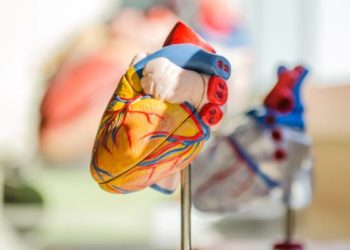Experimental gene therapy results in full clinical reversal of X-linked SCID [Classics Series]
Image: PD
1. Two patients with X-linked severe combined immunodeficiency (SCID) were treated with a retroviral-vector containing γc receptor for IL-2 with full clinical reversal after ten months.
2. No side effects were reported during the study period.
Original Date of Publication: April 28, 2000
Study Rundown: Prior to this experimental study, gene therapy was a theoretical concept confined to laboratory models of single gene diseases. Previous attempts to translate gene therapy into clinical application resulted in failure and most notably, in 1999, led to the death of Jesse Gelsinger from multiorgan system failure.
This study is notable because it showed the first definitive cure for X-linked severe combined immunodeficiency (SCID-X1) with clinical remission ten months after initial treatment. It was also notable as one of the first successful gene therapy trials. While cases of insertional mutagenesis due to the use of viral vector occurred in subsequent trials, this trial was considered a success in showcasing the potential of gene therapy as a viable clinical procedure. There are now several trials underway showing promise for treatment of SCID-X1 and adenosine deaminase deficiency, another deadly immune deficiency disease.
In summary, this study was a seminal paper in gene therapy that was originally published in 2000 in Science. Two patients with SCID-X1 exhibited full clinical remission of their disease and left protective isolation three months after treatment. At the time of publication, both patients were living at home for at least 10 months without any reported adverse effects.
Please click to read study in Science
In-Depth [experimental study]: Two patients with SCID-X1, one 11 months-old (P1) and the other 8 months-old (P2), underwent ex vivo γc gene therapy. CD34+ cells were separated from bone marrow extracts and infected with a defective Moloney retrovirus containing the γc gene over the course of 3 days. Approximately 19 X 106 and 17 X 106 CD34+ cells/kg were infused into P1 and P2, respectively, without chemoablation. Transgene expression was 40% and 36 % for P1 and P2, respectively.
At 150 days after treatment, T-cell counts, including CD4+ and CD8+ cells, increased in both patients to values exceeding 2,800/µL from less than 500/µL in P1 and 1,300/µL in P2. Both patients manifested sustained function of their immune systems and left protective isolation at days 90 and 95 after gene therapy. At the time of publication, growth and psychomotor development was normal in both patients and no side effects were noted.
By Jose-Marc Techner, Andrew Cheung, M.D.
© 2013 2minutemedicine.com. All rights reserved. No works may be reproduced without written consent from 2minutemedicine.com. Disclaimer: We present factual information directly from peer reviewed medical journals. No post should be construed as medical advice and is not intended as such by the authors or by 2minutemedicine.com. PLEASE SEE A HEALTHCARE PROVIDER IN YOUR AREA IF YOU SEEK MEDICAL ADVICE OF ANY SORT. Content is produced in accordance with fair use copyrights solely and strictly for the purpose of teaching, news and criticism. No benefit, monetary or otherwise, is realized by any participants or the owner of this domain.







